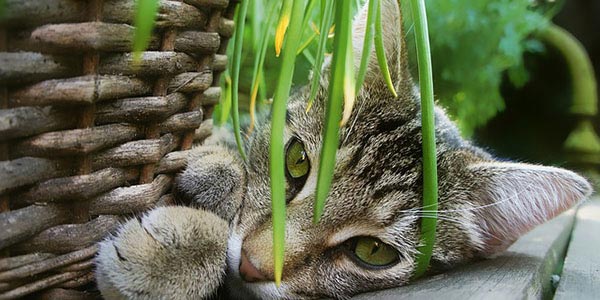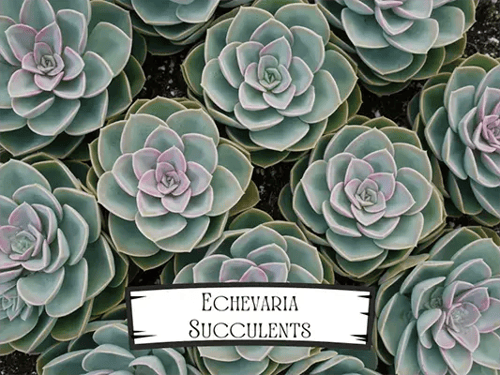
Nature is good for us. Nature is healing. But the outdoors isn’t always available to us when we’re tethered to a desk or have too many things to take care of around the home. This is when it’s the glorious houseplant’s time to shine.
Unfortunately, many indoor plants are toxic to dogs and cats. We’ve got an article listing some the most popular houseplants that you should never bring into a home with pets.
But it’s always more fun to see the beauties that we can put in our shared spaces without the fear of an unexpected vet visit. Here is a list of 14 of our favorite non-toxic pet-safe houseplants.
A Word of Caution Before We Begin
Anything in excess can become a problem, and while the plants below are non-toxic, that doesn’t mean they couldn’t become a potential hazard (like choking or causing an obstruction).
Please always use extra caution with anything you bring into the home, especially if your dogs and cats are known to put everything in their mouths. Besides, you’re getting these plants in order to enjoy them, not as a snack or interactive play toy for your pet.
Check out this article for tips to keep your cat out of your houseplants. For dogs who love to dig, you may want to stick with hanging plants or smaller planters they can’t get to.
Pet-Friendly Indoor Plants
Safety Note: All of the plants we have listed below have been reviewed for their non-toxicity. We've included a photo of each plant, but it's important to understand there are many houseplants that look exactly alike. So we linked directly to the specific plants we are mentioning. We cannot guarantee non-toxicity and recommend that you confirm the plant is safe before purchasing any deviations from these.
Succulents
While not all succulents are non-toxic for pets, many are. We’ve got them growing indoors and outdoors and they’re adorable. There are thousands of varieties, all with very unique textures, colors, and shapes.
As with most of the successful plants in our home, they can tolerate a lot. Lots of light, very little light, different types of soil, and don’t need a lot of water. And while I haven’t tried it, they are supposed to be easily propagated to create new plants.
Peperomia Obtusifolia "Baby Rubber Plant"
Commonly called "Baby Rubber Plant", the Peperomia Obtusifolia is a safer alternative to the Rubber Plant (which can cause mild toxicity to humans and pets). While it enjoys a lot of indirect light, it can also do well in more dimly lit areas and is very low maintenance — just make sure not to overwater or put in too sunny of a spot.
This will brighten up any kitchen window counter or office bookshelf. Its small size makes it very portable and gives you a lot of flexibility in terms of placement options.
Haworthia"Zebra Cactus" Succulent View on Amazon
View on Amazon
Nicknamed the "Zebra Cactus" for its white markings, Haworthias are a popular succulent that thrives in shaded spaces, so you can even enjoy it in a room with no natural light. Like all of the succulents listed here, they don't have to take up a lot of space, are very easy to maintain, and come in several variations.
Keep in mind that with some low-lying pointy succulents, there's the potential for a pet to injure themselves if they were to run into one of the sharp ends. They can sustain damage to their eyes, tongue, oral cavity, esophagus, stomach, and/or intestines (if swallowed). However, you can always try placing the Haworthia up higher and out of reach.
Echeveria Succulents
While very similar to another adorable pet-safe succulent sharing the common name "Hens & Chicks," Echevaria are a different genus than Sempervivums. Some of the main differences being the Echavaria's thicker smooth petal texture, a wider selection of color varieties, and the ways in which they are propagated (although both are very easy to make new plants from).
Let the soil dry out completely before giving it a good drink of water. Echevarias can tolerate sun and shade very well. Put several of these cuties in a planter box, and you have a great centerpiece.
Pet-Safe Plants and Palms
Maranta Leuconeura "Prayer Plant"
Commonly called "Prayer Plant" due to the way its leaves curl up like hands praying when the sun goes down. These beauties from Brazil have showy leaves with several color variations to choose from. Although the Prayer Plant doesn't need a lot of sunlight, the soil needs to stay moist, and it should be fed every two weeks.
Chlorophytum Comosum "Spider Plant"
These long-leafed beauties have a grassy texture, are very easy to care for, and will multiply rapidly if you let them. We’ve taken a clipping from the plant in our hanging basket and transplanted it to create a new plant to put in my favorite lip container seen in the photo below.

If you ask me, that's half of the fun of getting houseplants — you get to show off even more of your personality with the planter you put them in. I haven't had a ton of luck with super kitschy planters at my local nursery, but Etsy is a treasure trove of creative display options.
Phalaenopsis Orchid
Commonly called "Moth Orchid," the Phalaenopsis is one of the most common orchids and a great alternative to lilies, which are highly toxic to cats. This stunning bloom is a great addition to any home looking for flashy pops of color. It is also recommended as the best orchid for beginners.
For some reason Orchids tend to get a bad rep for being hard to care for. They enjoy bright light (including their root systems) and a more temperate climate, so nothing too hot or cold.
One thing that can kill many plants, especially orchids, is overwatering. I'm no pro, but I have been able to keep mine alive using the ice cube trick, which is SUPER helpful for anyone who isn't amazing at keeping a watering schedule or who is a little too eager to water. All you have to do is put 2 ice cubes on top of the plant's bark once a week during warm weather seasons, and only use 1 cube per week in the colder months.
Pachira Aquatica "Money Tree"
Finally, an easy way to bring money into your home. The Money Tree is native to Taiwan and has been associated with good luck and fortune. These come in a variety of sizes with the trunk sometimes creating a braid. The bright green palm-like leaves bring a happy, relaxing, tropical feeling into your space.
Dypsis Lutescens "Areca Palm"
Although some species of palms can be toxic to cats and dogs, the Areca Palm is safe for pets. This beauty thrives in bright indirect sunlight but can also live in lower light conditions, which makes it an ideal houseplant. Just make sure not to give it too much sun, which will result in leaf burns, and don't put it in a drafty area or near an air conditioner, which will also make it disgruntled.
Its wispy palm fronds may pique your cat's curiosity, causing them to take a few swipes or nibbles. It's important to keep in mind that although non-toxic, you want to make sure they don't chew up whole fronds because it could cause a gastrointestinal obstruction.
Chamaedorea Elegan "Parlor Palm"
If you don't have space for the Areca Palm, you're in luck — meet their smaller sibling, the Parlor Palm. There's a good reason it's one of the most popular indoor plants in the world: they're hard to kill. Unlike their slightly higher-maintenance sibling above, the Parlor Palm needs lower light conditions and is less fickle when it comes to its watering schedule. It is also a fantastic natural air purifier.
Musa Acuminata "Dwarf Banana Plant"
If you love palms and don't have a lot of space, the Dwarf Banana Plant is a great option. The perfect spot for this cutie is near a south-facing window, and it likes to thoroughly dry out between waterings. This is a great choice if you are looking for something tropical and with larger leaves than the Areca Palm.
Carnivorous Plants
Not only are carnivorous plants cool to look at — they also help take care of bugs that have made their way into your home! They're the perfect houseplant gift for any fan of Little Shop of Horrors.
Pitcher Plants
These babies just sit there (or hang in a basket), look pretty, and let the the bugs come to them. They require very little maintenance, just make sure the soil doesn’t dry out and their mouths are filled at least ½ way with water and they’ll do the rest.
Our Alata Pitcher Plant in the photo below, sits near the same kitchen windowsill that I am growing my veggie seedlings on and it’s been enjoying the steady line of ants coming to check out this year's produce.
In fact, last week I found a dog treat on the floor that a small army of ants had discovered before me. I didn't want to put it outside and attract critters, nor did I want to put it in the garbage where they would likely crawl out.

Just for funsies, I propped the treat against the side of the pitcher plant and quickly watched as they crawled up and into its "mouth." Then I tossed the bare treat into our compost in the freezer.
I am happy to report, this plant is very difficult to kill! Not that we were trying to kill it, but at one point it had dried out so much we thought it had gotten to the point of no return.
Instead of giving it a proper burial in the compost pile, I cut it back hard to see what it would do. Wouldn’t you know, it grew back stronger than ever. I’m sure there’s a metaphor for life in there somewhere.
Venus Fly Trap (Dionaea muscipula)
The Venus Fly Trap looks as close to an alien species as I have ever seen and watching them in action is nothing short of mesmerizing. They are a bit more high maintenance than most of the other plants listed above — they love light and will need an extra source beyond a sunny windowsill. They also need a pot tall enough to let their roots grow, and need a dormancy phase during the winter. This article details how to create the dormancy phase in your refrigerator. And of course, regular feedings.
Unusual Behavior to Look Out For
Keep in mind that even with pet-friendly plants, paying close attention to any abnormal behavior your animal may be showing is essential. Although your plants may be safe for dogs and cats from a toxicity standpoint, your pet may consume enough of a leaf to cause an upset stomach.
Depending on the leaf's shape and how much they eat, there's a risk of a possible gastrointestinal obstruction or even a foreign body in their nose. And of course, getting too close to some plants will bring the risk of scratching a pet's corneas.
If you notice any of these symptoms or anything else concerning, contact your veterinarian immediately.
- Coughing
- Gagging
- Sneezing
- Vomiting
- Diarrhea
- Decreased Appetite
- Pawing at Mouth or Nose
- Pawing at Eyes or Squinting
For additional information on plant and flower toxicity, ASPCA's Animal Poison Control Center Hotline is a great resource.
Now, you should be ready to not only spruce up your living space but do it without the anxiety of risking the health and safety of your dog or cat. There are a number of other non-toxic plant options that you can research on ASPCA's Toxic & Non-Toxic Plants search engine. So take your time finding the right plant for your place and your cat's personality. And take the time to see what really works.
You may find that one plant may be more attractive to your pets than another, so be vigilant about where you place them. Your dog or cat may not even bother the plants at all. At least if they do, you were smart enough to get safer greenery. And if you find living plants don't work in your particular situation, you always have the option of silk or plastic plants.
Share your favorite non-toxic houseplants or tricks to keep your pets away from them in the comments below!













